Sooner’s wiring is unfortunately standard issue ‘old boat wiring’ which is to say, pretty bad (see previous blog post on the state of gudges wiring) and sorting that out would be the first priority, as ‘fire’ is one of the two sure ways to lose a boat.
She has a separate AC panel (where you ‘plug in’ to shore and then your outlets work the same way as a house) and a DC panel (which runs off the internal 12v boats battery) which is apparently a lot better practice than the combined AC/DC panel that Gudge had, however both panel were very old and probably could do with being replaced as the AC panel didn’t even have breakers, just fuses.
So the first thing to do would be the AC. Once that was done I could be sure of not electrocuting myself (AC is a lot more dangerous than DC generally), I could plug stuff in like tools and lights (so I could take out the DC wiring at my leisure) and would be able to run dehumidifiers overnight to help dry out the boat.
I’ve split it up in my head into 3 main phases:
- Change out the shore plug to a smartplug and add a galvanic isolator
- Change the outlets to GCFIs
- Swap out the panel, trace and redo any wiring
Now hopefully this won’t take me too long, as the AC is pretty simple and consists of one main circuit and then only 3 additional circuits for the outlets, the battery charger and the water heater.
With all that, I started on item one, switching to a smartplug.
I’ve written before about my reasons for changing to a smartplug, but the cliffnotes version is the 30amp twistlock connectors were designed in 1938 and are shit, often causing high resistance and fires while the smartplugs have a lot wider surface area and positive locking. For more details, a very exhaustive explanation is here.
This was pretty simple, first I had to remove the old socket
Then install the new one – which should have been a piece of cake, except the new smartplug socket was just fractionally too big which meant I had to enlarge the hole. As I don’t have a full toolkit rebuilt yet, this lead to me using a drill bit on it’s side as the worlds crappiest grinder. Finally however, it was done!
Then I just had to do the cable, which involved cutting off the end
doing a LOT of stripping (of the wire, not myself) and then attaching the new end on.
That stain on my trousers is soap, which you have to use to lube the cable through a grommet, not wee. Just to clear that up.
Once all that was done, the next step was to install a galvanic isolator, which basically helps isolate your boat from other boats at the dock that are plugged in. Otherwise, an unprotected boat will ‘eat’ another boats zincs/prop. More details here
The one I used last time was the Promariner FS30 which was great but also expensive. After a bunch of searching I found another brand which was around 1/3 of the price, while still being fail-safe (meaning if it died, then the AC ground to DC would still be connected rather than breaking it, you’d just lose the galvanic protection). It was also a bit smaller, which was a bonus.
To install is simple, you just insert it in the green wire between the breaker panel and the shore power connector, which was done with only minor trouble.
And with that, the boat takes a step closer to not burning down!
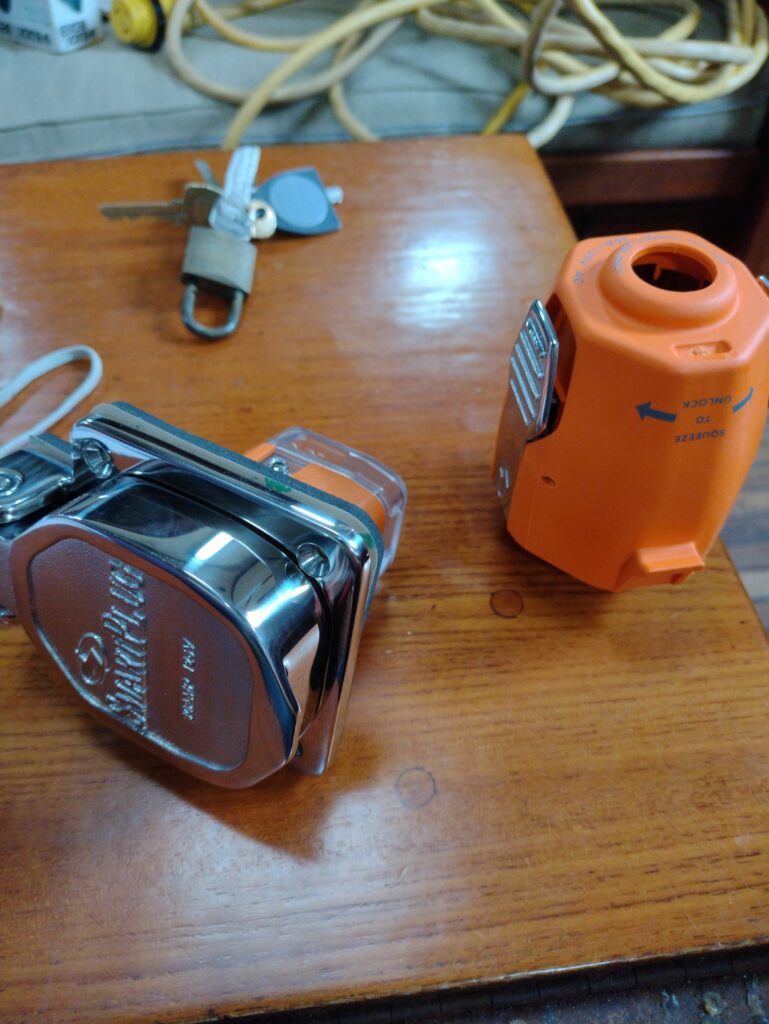
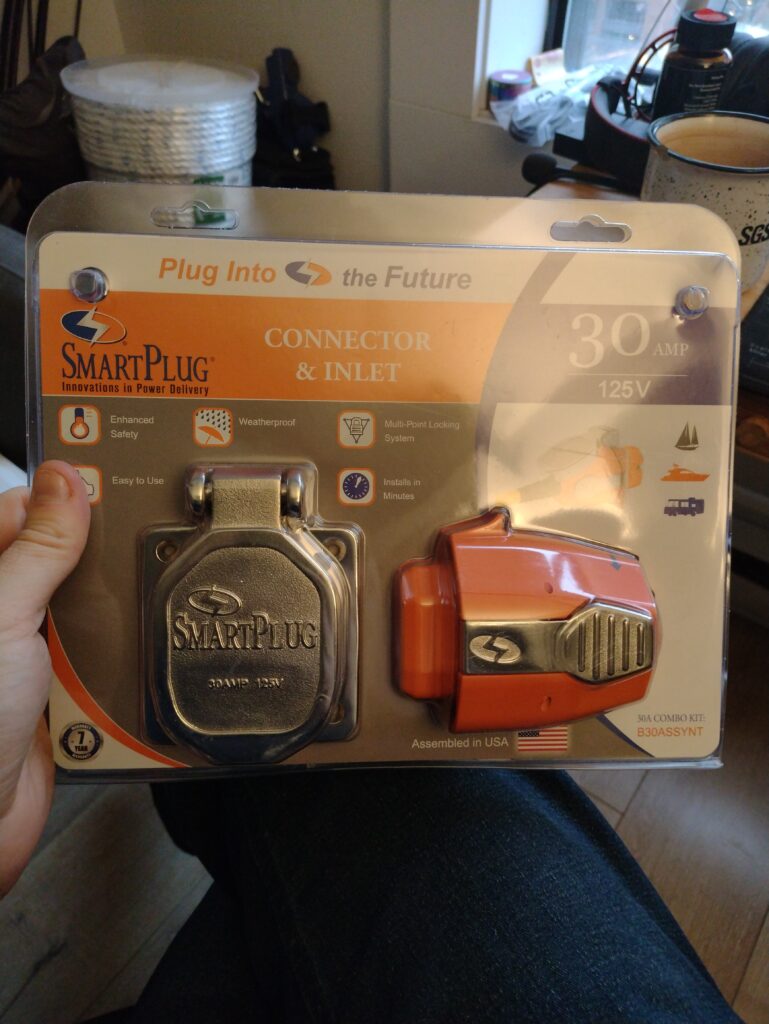
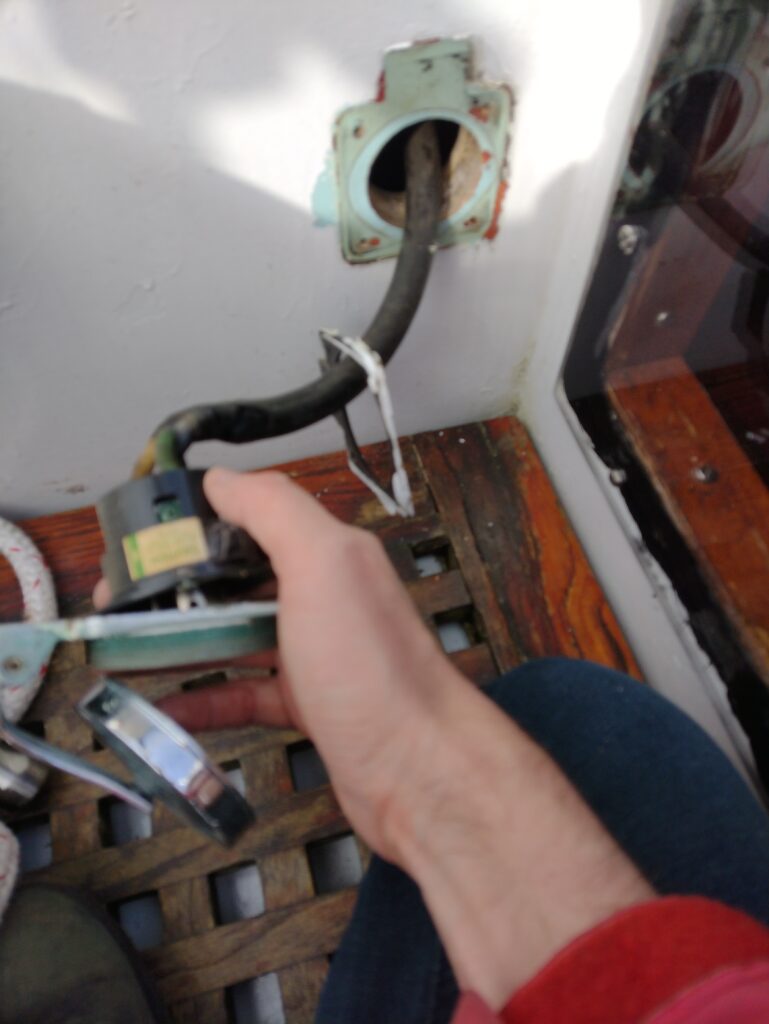
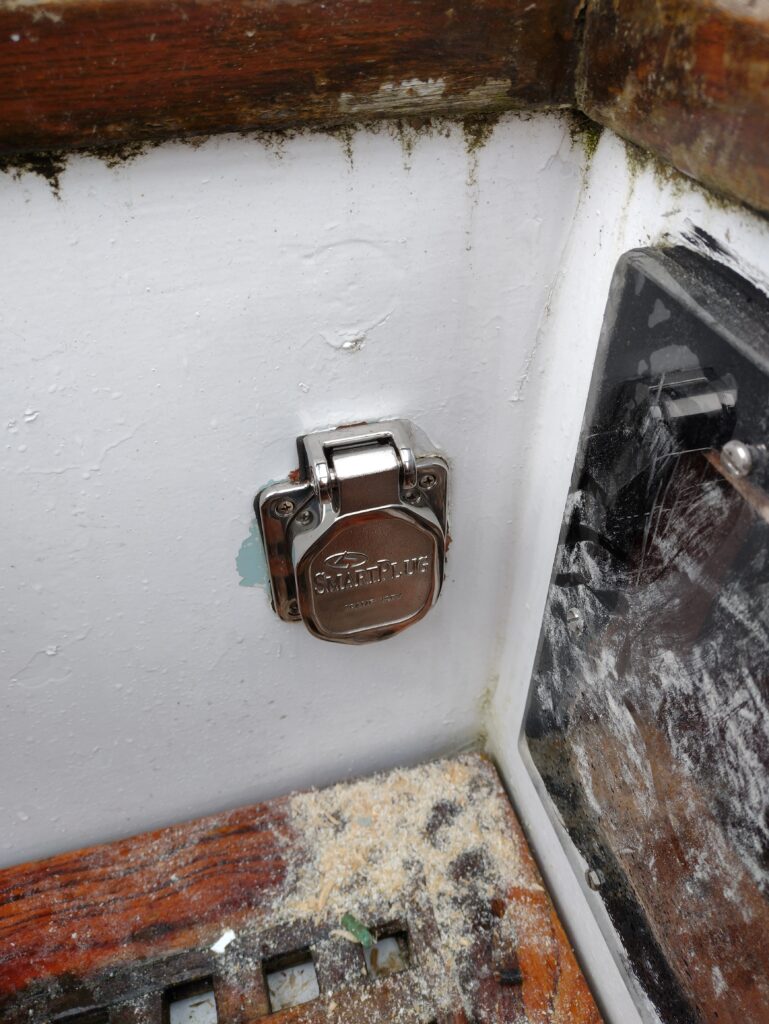
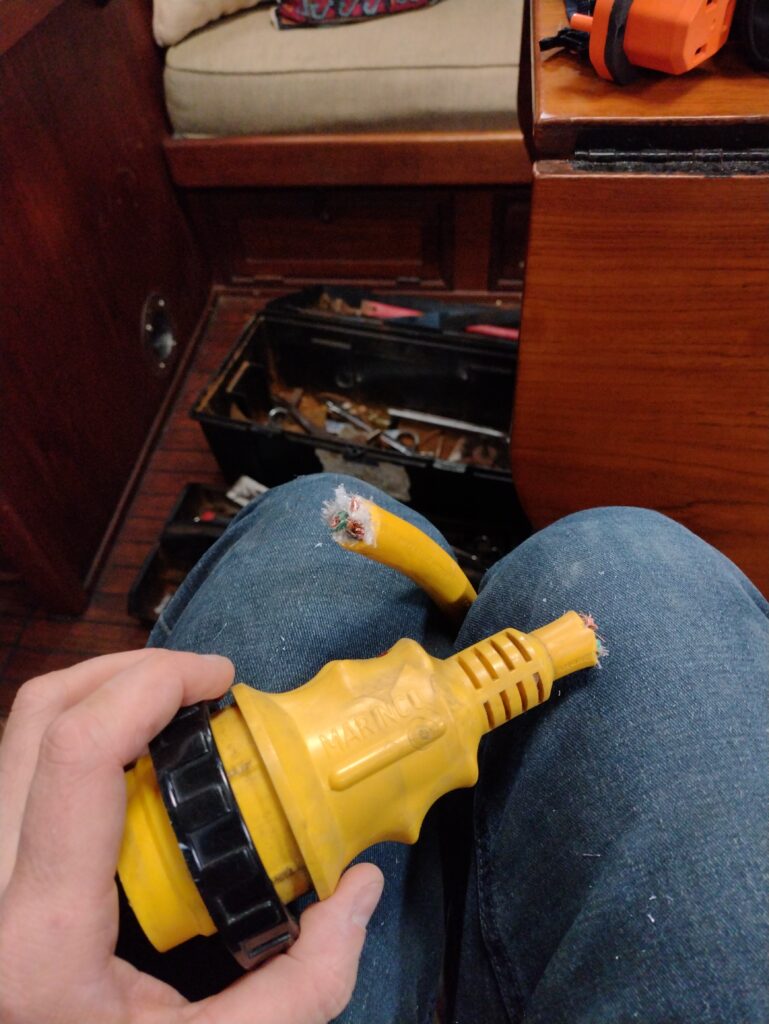
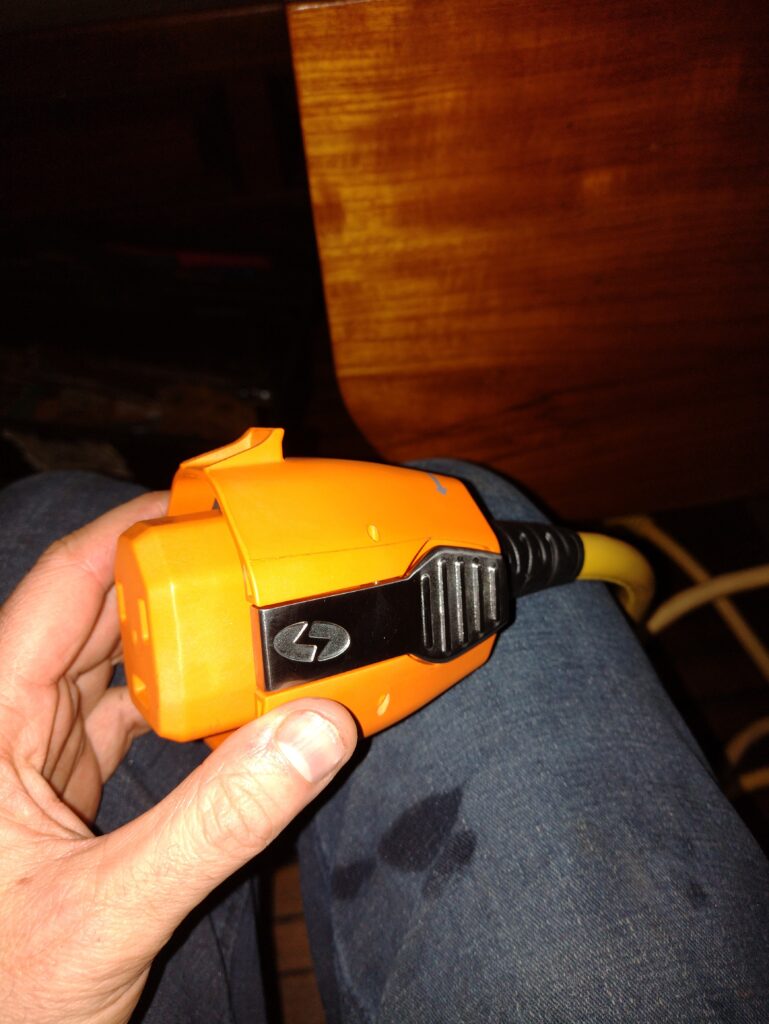
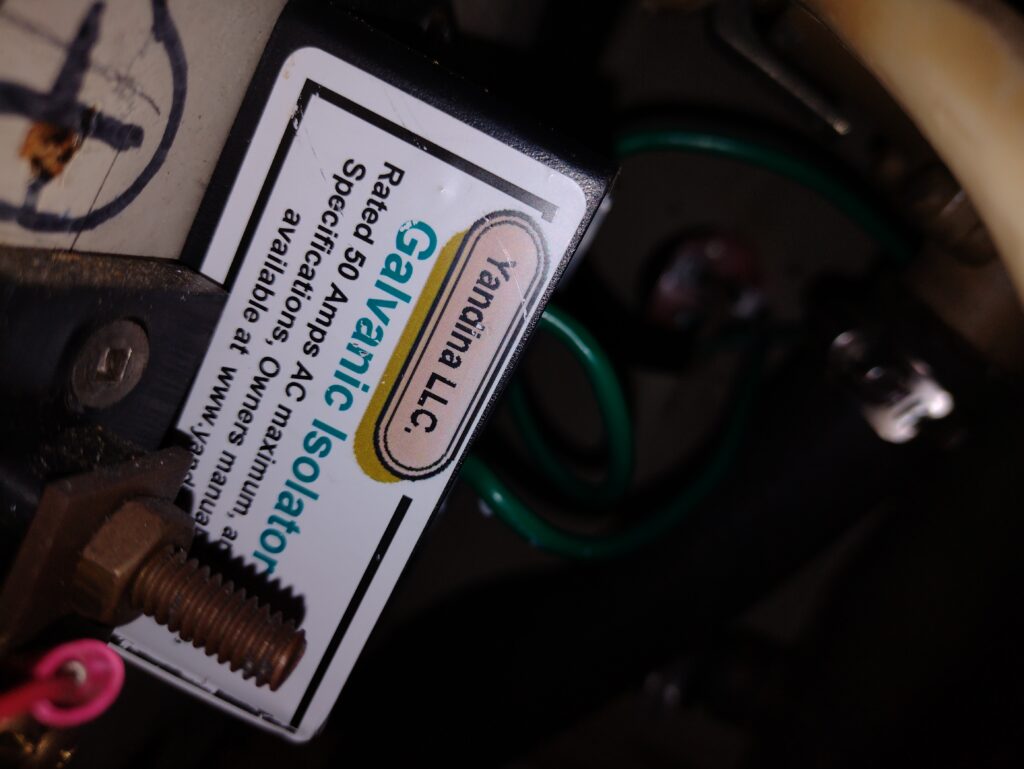
“lube the cable through a grommet” …That’s a euphemism I haven’t heard before… 🙂
It’s trickier than you’d think!